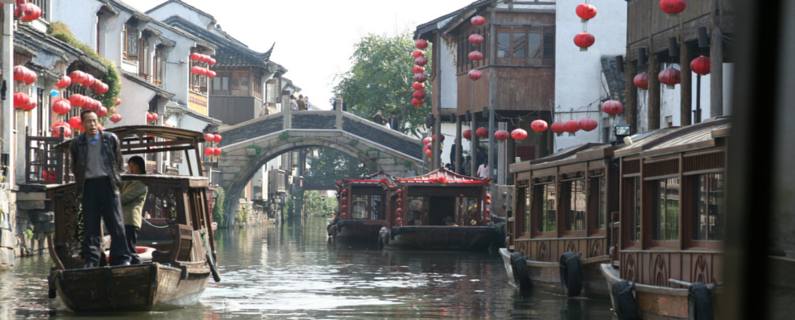Brazil’s recent dam failure and its subsequent environmental disaster are raising concerns around the globe about the security of international supply chains. The dam was owned by a limited liability corporation, Samarco Mineracao, that had its parent- shareholders two international corporations, including Australia’s BHP Billiton. The cost of cleaning up the environmental mess caused by the flood of toxic chemicals contained in the dam water should be borne by Samarco. However, that company’s financial situation appears dismal (as of June of this year, it reported almost seven times as much corporate debt as corporate equity). Brazil’s legal leaders are potentially looking to both parent companies, as well as other contractors involved in the construction and maintenance of the structure, to make up any economic difference that Samarco can’t cover.
China’s Environmental Policies are Concerning:
For at least a decade, international environmentalists have been closely watching China’s environmental activities, especially regarding how those activities interact with the explosive economic growth that the country has experienced in the past 35 years. Many observershave expressed significant concern over China’s capacity to overlook environmental impacts in favor of ever greater economic returns. At the same time, political observers have been watching China’s government engage as peers with governments of other countries that have much stronger and more rigorous environmental controls in place. At this point, the world is still waiting to see how China will reconcile its economic juggernaut with the damage that engine is causing to not just China’s, but the world’s climate and ecological landscape.
Two recent revelations illustrate the dilemma:
In April of this year, the BBC sent a correspondent to the city of Baotou in Inner Mongolia. He was researching the supply chain route that many consumer goods travel on their way through China’s manufacturing hubs to the world’s store shelves. Baotou is one of the world’s biggest suppliers of “rare-earth” minerals, mineral elements that are used in everything from electric car motors to flatscreen TV’s. In 2009, China produced 95% of the world’s supply of rare-earth minerals. The by-product created by the mining and refining of the minerals, however, is a toxic mash of sulphuric and nitric acids mixed with a variety of other toxic, sometimes radioactive substances. For at least four years, “disposal” of the toxic mess has been to dump it into an ever-growing lake of sludge on the wrong side of town. That lake now measures more than six miles in diameter.
2. Climate Prediction System Launched:
On the flip side, in September, China launched its new climate prediction system, which is intended to predict natural disasters. Driven in part by China’s air pollution levels (many of China’s largest cities struggle to maintain healthy air quality), the system will measure and control dust and haze. According to the China Meteorological Administration, as much as 70% of “natural” disasters are related to climate conditions. In China, major climate conditions affect the health and lives of about 400,000,000 Chinese people annually. That number includes a large percentage of manufacturing laborers.
First Steps for International Manufacturers:
Review Each Supply Chain:
Even for those manufacturers with existing disaster contingency plans, a thorough review of all aspects of each supply chain would probably reveal circumstances for which no contingent plan has been devised. Often, as China’s industrial sectors evolve, individual factories and the people who staff them are compelled to make internal changes that impact the end quality or quantity of production. The alterations are rarely reported, and their discovery down the production line often puts the entire production system at risk.
Look for Redundancies:
While there may be a strong relationship between the international producer and the contracted factory, international producers may not be familiar with the sources from which that factory draws. The failure of a single supplier within that product’s materials list may result in the entire product becoming contaminated by substandard replacement materials from an unknown source.
Look for Supplier’s Locations:
Not knowing where materials are manufactured can allow substandard )or potentially hazardous) materials to be included within production lines. Many corporations have been hit financially when their customers learn their products are made with toxic substances.
China’s manufacturing hubs remain at the center of global production lines, but its environmental record strongly suggests high risks for environmental disasters to many of its international manufacturing participants. Constant, educated oversight of all China manufacturing operations is critical for international producers who seek to access that lucrative production base without compromising their quality or their standards. At Vantage Compliance and Mitigation, we bring more than 17 years of analytical experience with China’s industrial sector to your production lines. Call me to chat about your company’s potential risk of exposure to environmental disaster.
You may also like to read some of my other blogs. They can be found here:
Environmental Disasters Cause Economic Disasters
Regional Variations Will Impact Rollout of China’s Two-Child Rule – Part 2
Two-Child Policy May Open New Economic Doors in China – Part 1
“Red Flag”: Reducing Risks in your China Supply Chain
Flexiblity of Chinese Import Suppliers Will Weather Changes in Global Manufacturing Sector
Communication and Relationships Smooth the Process of Importing From China
Protect Your Manufacturing Outcomes By Avoiding Product Delays and Failures
Reputable Chinese Suppliers Maintain China’s Industrial Reputation
China’s Economic Overhaul Will Improve Global Supply Chains
Manufacturing Compromises Can Ruin Your Brand
Tenacity and Communications Reduce Risk of Chinese Child Labour Law Violations
Safety Study Identifies Chinese Supply Factory Risks
China Manufacturing Industry Challenges Trigger Inspections, Consequences
Risk Mitigation Can Prevent Chinese Supply Chain Disruption
Tips and Traps of Contracting in China
Keeping Your Supply Chain Green: Avoiding the Environmental Polluters when sourcing in China
Ensure Timely Contract Compliance with a Chinese Supply Chain Expert
Two Key Questions To Answer Before Onboarding Your Chinese Manufacturing Supplier
Off-Shore Manufacturer’s Certificates Require Credibility
Factory Planning Principles Improve Supply Chain Quality
Mitigating Risk of Quality Fade in Overseas Manufacturing Facilities
How to Assure your “Green” Supply Chain in China
ChAFTA Opens Doors for increase in China-Australia Business relations
China Verification for Your Manufacturing Supplier Needs
Australian Industry Agreements Encourage More Chinese Factory Verifications
China Factory Verification: Check Before You Buy
Frozen berry recall highlights potential supply chain risks in offshore production



